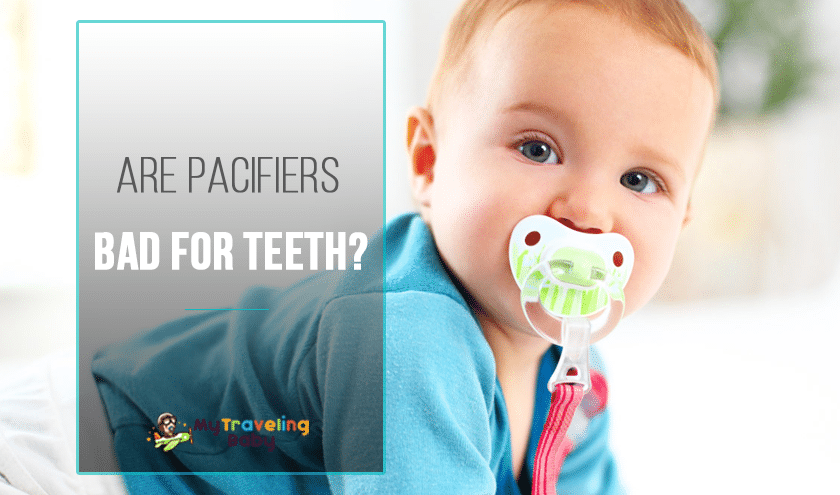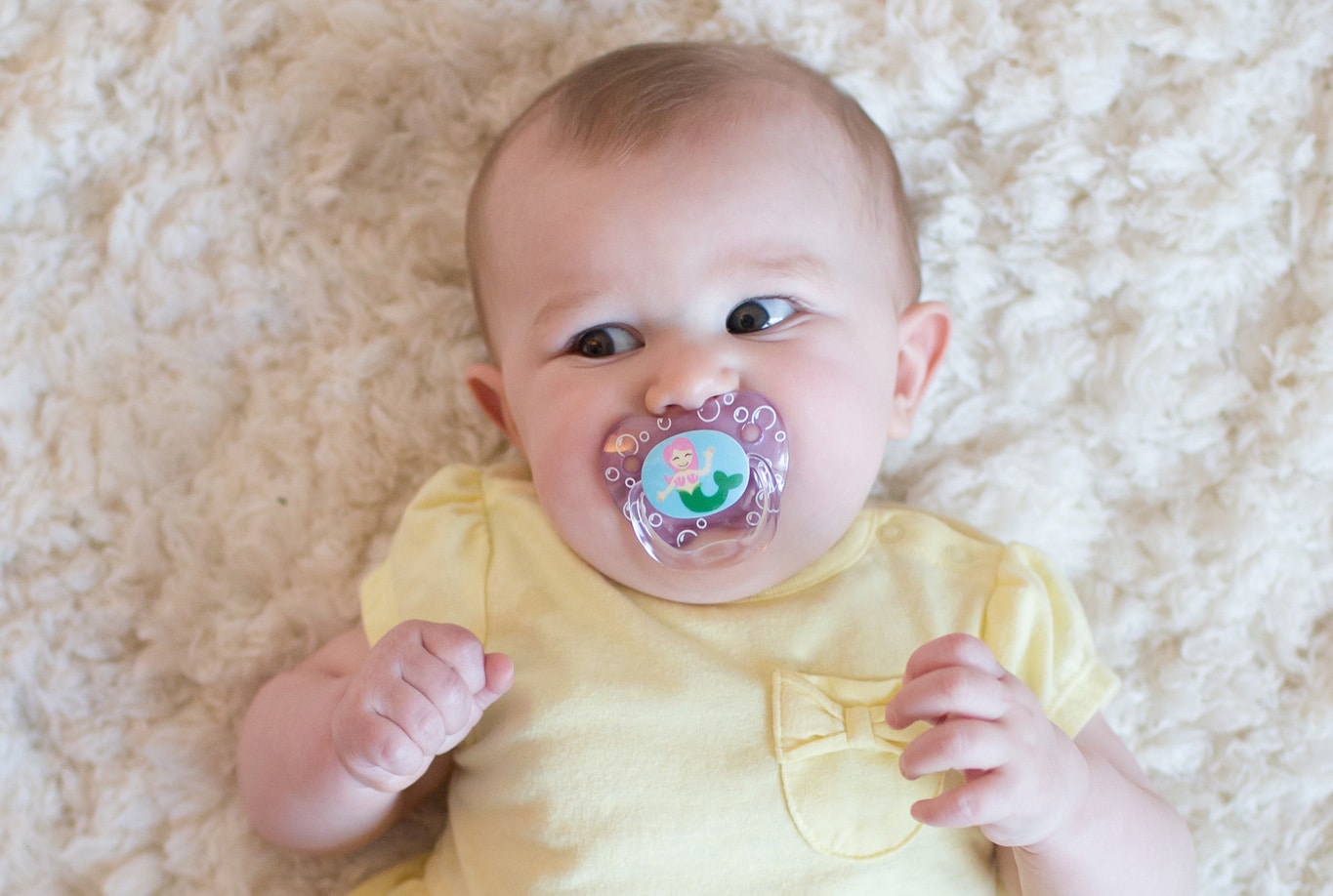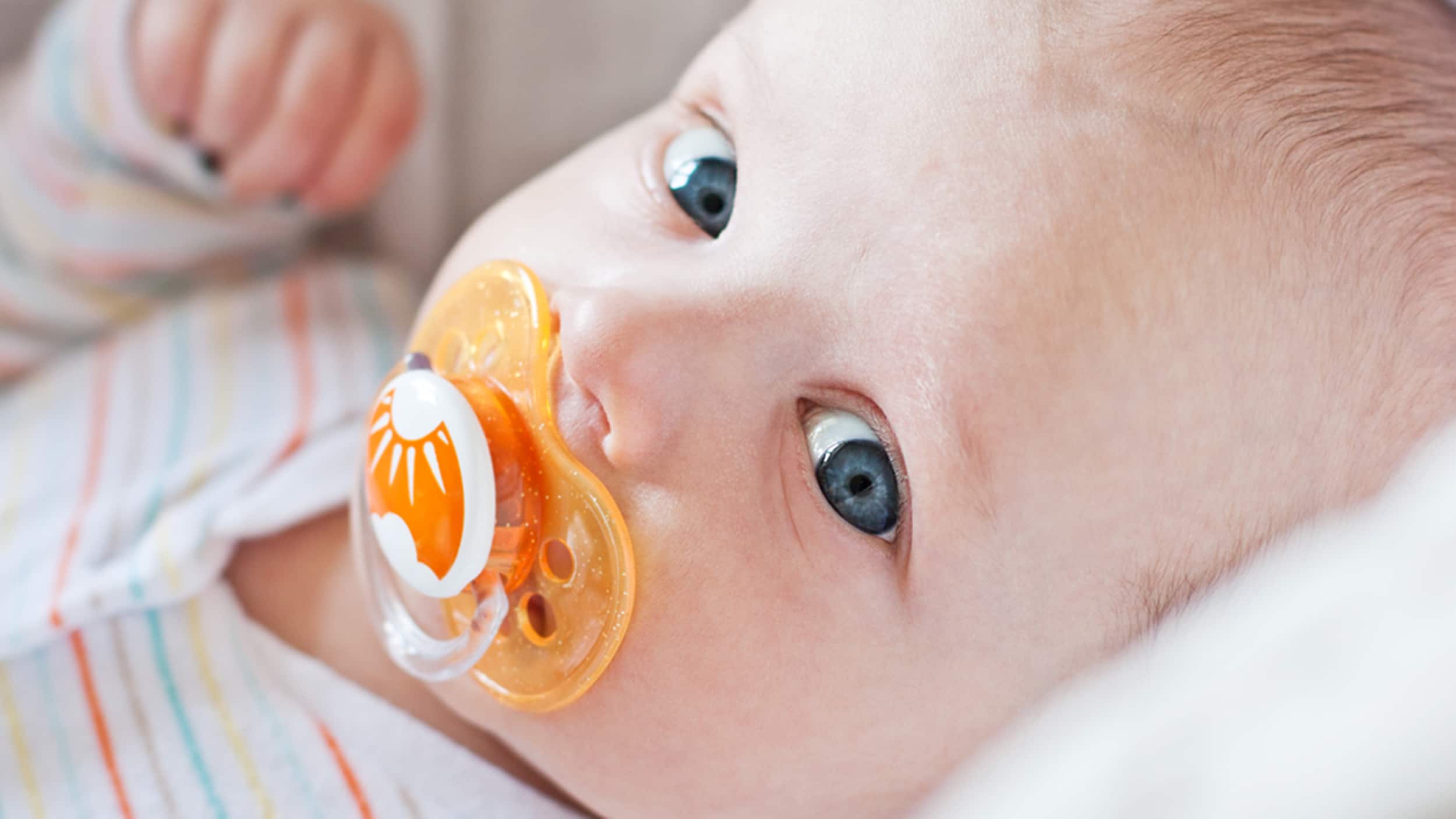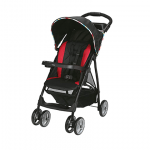
Is your baby in love with his or her pacifier, but you’re wondering if it could cause teeth problems later on? Although it can be soothing for a child, sucking on a pacifier can lead to serious dental issues as he or she gets older. One of these conditions is called pacifier teeth, which is a result of long-term binky use and can lead to complications such as crooked teeth, problems with the jaw alignment, changes to the roof of the mouth, etc.
In this article, we’ll discuss the adverse effects of pacifiers on the baby’s oral health and recommend what steps you should take to prevent your kid from developing pacifier teeth.
What Are Pacifier Teeth?
In most cases, a mother will know that her baby has pacifier teeth just by taking a closer look at the baby’s mouth. These are the most common characteristics:
- Crooked teeth
- Tilt in the bottom teeth
- Anterior open bite
- Severe overbite
- Narrowing of the roof of the mouth
One of the biggest mistakes that you can make here is to think that “pacifier teeth” are not something to be concerned about, as they’re just baby teeth that will eventually fall out. However, if the binky use goes too far, your child stands the chance of incurring damage to the palate, bite, jaw, gums, and tongue placement permanently.
When Does Binky Use Become a Problem?
In some scenarios, a pacifier can be very beneficial, especially if we’re talking about newborns with strong urges for suckling. Moreover, these objects can be quite helpful for the newborns that are having problems with getting a good latch during breastfeeding (underdeveloped oral muscles). Another benefit is in the fact that the pacifiers are also known to reduce the risk of SIDS (Sudden Infant Death Syndrome).
The primary issue with pacifiers is, actually, in the amount of time during which the kids are allowed to use them. In case the child uses the binky for longer than six months, there’s an increased chance of the binky messing with the kid’s dental development. Before this age, however, these objects can provide assistance with innate reflexes and oral muscle strengthening.
What’s the Difference Between Sucking and Suckling?
Unlike sucking, suckling is a reflex during which the tongue moves in a front to back motion. During this action, the tongue will be cupped – it’s something that allows the baby to intake more milk during the breastfeeding.
Between two and six months of age, most of the babies switch to the sucking movement. Unlike suckling, this reflex involves more up & down tongue motions and is more actively controlled by the child.
For a natural progression from one reflex to the other, breastfeeding is the best. A couple of studies have also shown that it can be highly protective against persistent binky use. Even though the binky use can lead to the strengthening of the baby’s suckling muscles, using it for a longer time than necessary can delay the change from suckling to sucking.

When Do the Signs of this Condition Appear?
Using a binky after the age of three brings various developmental risks, such as language and speech issues. Chronic and excessive use of pacifiers can also delay the baby’s teeth from falling out.
-
Excessive use past the age of 2
In case a toddler still sucks on a binky between two and four years of age, one can consider his use of it excessive. During this period, there’s a chance of pacifier teeth symptoms appearing, although they can still correct themselves in case the binky is taken away. However, the chances for this get slimmer the longer it takes the parent to take the binky away.
Early signs include:
- Slight open bite
- Top teeth pushing forward
- Excessively crooked teeth
-
Excessive use past the age of 4
In case the kid still uses his binky between four and five years of age, one can consider his use of it chronic. By this point, both the early and late signs of this condition are very easy to notice. Unfortunately, some of them might stay there forever, even if the binky is taken away. The most severe cases of pacifier teeth typically require dental intervention.
When Should My Child Ditch the Binky?
Ditching the pacifier is one of the most critical milestones in your baby’s life and something you’ll need to assist him or her with.
The best time at which you should help your child break the habit is when he or she is six months old. From this point forward, the kid will slowly become emotionally connected to their dummy. The longer this attachment lasts, the more challenging it becomes to break it.
In case your kid is already older than six months, you shouldn’t panic – it’s not too late yet. The child should be saying his or her final goodbye to the dummy by their 2nd birthday. Binky use after the 2nd birthday is considered excessive and waiting any longer than that can lead to irreversible effects.

The Cost of Pacifier Teeth
In case you’ve noticed that your child has symptoms of this condition, seek immediate advice from a dentist and take away the binky. When it comes to costs of corrective measures for this condition, one can expect big numbers – they can even exceed $10,000.
This is precisely why the prevention is undoubtedly the best option. In case you’re unable to help your child with breaking the habit, make sure to ask the dentist for some help. Most dental professionals are willing to help – they know that sucking on a binky can easily become a very costly habit.
Conclusion
One of the most important things to consider when talking about pacifier teeth is that this condition can ruin your child’s smile. Once he or she becomes an adult, your child’s confident smile will positively affect every single aspect of his or her life, including things like personal relationships and future career.
For that matter, do not allow your kid to use a pacifier for too long. Help him or her break the habit and save their emotional health, attractiveness, and overall happiness that come with a healthy smile.



